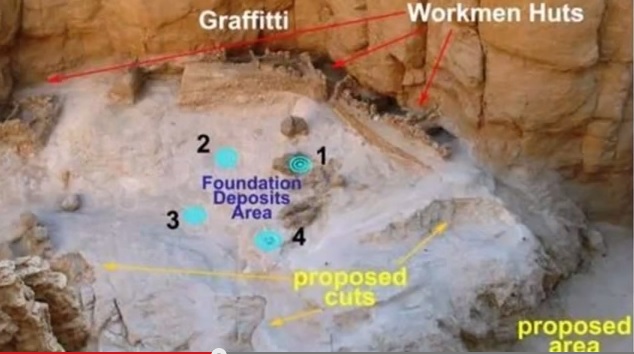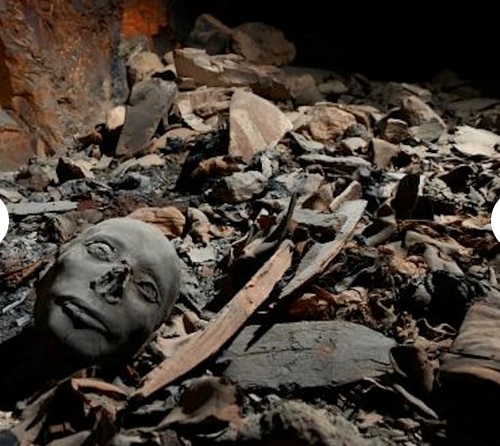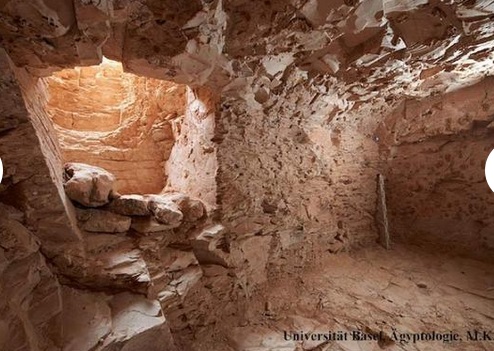It has been an exciting month for archaeologists, researchers and Egyptology experts, as two major discoveries have been noted in the last few weeks in Egypts Valley of the Kings where royal Egyptians were buried. The most recent are "mysterious artifacts," found in four deposits, usually indicative of a nearby tomb, according to Afifi Ghonim and Glen Dash at an abstract presentation at the Current Research in Egyptology conference in London.
"We identified many new inscriptions, recorded many new workmen huts, and registered hundreds of distinctive finds, including ostraca [writing inscribed on pottery]. Our work in the western end of the Western Valley left us tantalizingly close to finding a new tomb," Ghonim told the London audience. Their presentation in London focused on the team's work in the western valley. Additional finds made in other parts of the Valley of the Kings include an ancient flood control system.
The artifacts were found arranged in what is described as a box-like shape and include the head of a cow, a vase painted in blue and flint blades that have wooden handles that are still preserved after more than three millennia, as well as multiple other findings, all shown in the video below, starting at the 1:51 minute mark.
The previous findings including 50 mummies, also found in the Valley of the Kings, including princes, princesses and infants, as excavators hunt a tomb that had been trashed by grave robbers. Some of the mummies were fragmented by fire damage but most of the infants were recovered intact.
One of those newly studied tombs is KV 40. From the surface, the only hint of a burial chamber was a depression in the ground. Excavations revealed a 16-foot-deep (5 meters) shaft, a corridor and four rooms in shambles. The 3,300-year-old tomb was likely plundered for its gold and wood during antiquity, and later looted for any other valuable goods that could be sold. The archaeologists, who have been excavating in the region since 2009, found textiles, mummy bandages, linen cloths, bones and other scattered funerary artifacts in the tomb. These objects were covered with soot from a heavy fire, presumably set by grave robbers of the late 19th century.
The adult mummies in KV 40 are largely fragmentary, likely torn apart by grave robbers, but infant corpses in the underground burial chamber remain intact, said researcher Susanne Bickel, of the University of Basel in Switzerland. And while most infants who died would have been buried in a simple fashion at the time, royal children buried in KV 40 seem to have been given a proper mummification, Bickel added.
There are so many Egyptian mysteries, some associated with tombs and excavation sites, others with ancient technology so advanced that some believe there must have been a civilization even more advanced that human beings are today, and others believing those that created that technology came from beyond Earth.

( Four foundation deposits in a box like shape have been discovered in the Valley of the Kings in Egypt. They may indicate the presence of a nearby undiscovered tomb.)

(Archaeologists made a number of other finds in the western valley, the portion of the Valley of the Kings where the deposits were found. These staircases were found some distance to the south of the deposits and lead to ancient worker huts)

(The four deposits are in a box like shape, something seen in other foundation deposits from the Valley of the Kings. There should, however, be a fifth deposit on the axis of the undiscovered tomb and that deposit has yet to be found)

(Tomb KV 40 at the Valley of the Kings was plundered several times and damaged by a fire. During recent excavations, archaeologists discovered mummified remains alongside fragments of coffins, cloth and pottery. Family members and children related to the pharaohs were likely buried here in the 14th century B.C.)

(The burial chamber dubbed KV 64 contained two burials, one from the 18th dynasty and the other the 22nd dynasty. The more recent burial contained a wooden coffin with the mummy of a chantress of Amun called Nehmes-Bastet.)
More images can be found at Live Science.
Susan Duclos owns/writes Wake up America
No comments:
Post a Comment